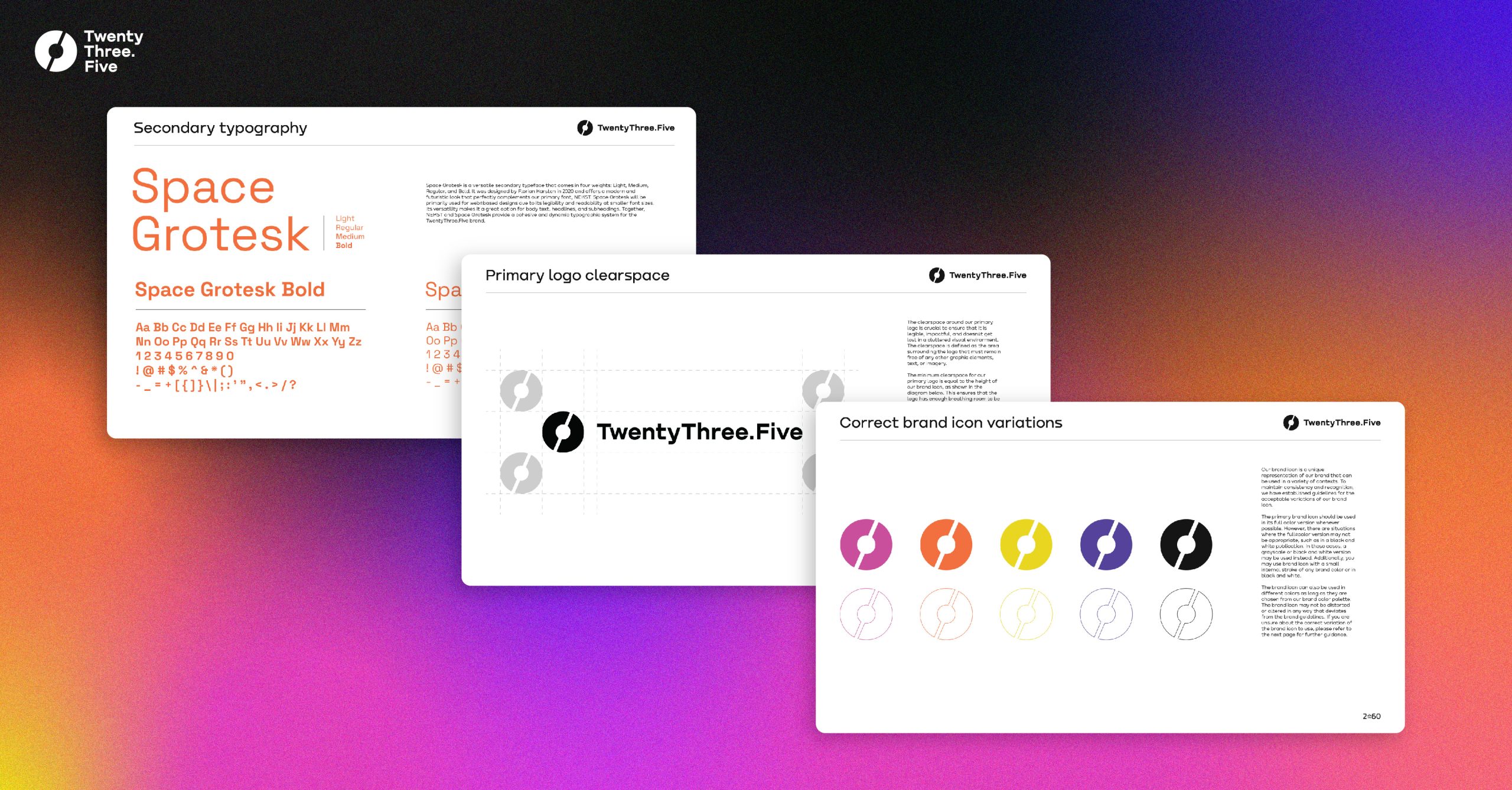
In today’s crowded marketplace, where consumers are bombarded with countless brand messages daily, standing out is a challenge that every business faces. One of the most potent tools in a brand’s arsenal for achieving this is its visual identity. The colors, logos, typography, and visual elements that make up a brand’s visual identity play a pivotal role in making it recognizable and scalable. In this post, we’ll delve into the foundations of visual identity, the importance of consistency and scalability, and explore case studies of brands that have harnessed the power of visual identity to become household names.
The Foundations of Visual Identity
At the core of a brand’s visual identity are several key elements that collectively define its personality and resonate with its target audience.
Logo Design
A brand’s logo is often the first visual element that consumers encounter. It’s the face of your brand, and its design should not be taken lightly. Effective logo design involves simplicity, versatility, and symbolism. Consider iconic logos like Apple’s apple or Nike’s swoosh. These simple yet powerful symbols are instantly recognizable and convey a wealth of meaning about the brands they represent.
Color Palette
Colors evoke emotions and associations. The choice of colors in your visual identity can make a significant impact on how your brand is perceived. For example, red can signify passion or urgency, while blue may convey trust and reliability. Selecting a color palette that aligns with your brand’s values and resonates with your target audience is crucial.
Typography
Typography plays a vital role in conveying your brand’s personality and message. Different font styles can evoke different emotions and associations. Whether it’s the sleek and modern fonts used by tech companies or the elegant and timeless fonts chosen by luxury brands, typography is a powerful tool for shaping brand perception.
Use our brand as an example. TwentyThree.Five uses a futuristic sans serif typeface that effectively plays into our space themed brand.
Visual Elements
In addition to logos, colors, and typography, visual elements like icons, illustrations, and graphics can enhance your brand’s visual identity. These elements can be used to create a unique visual language that sets your brand apart. Think of the playful illustrations used by Dropbox or the distinctive graphics of Airbnb.
Consistency and Scalability
While establishing a compelling visual identity is important, maintaining consistency and scalability is equally crucial to a brand’s long-term success.
Brand Guidelines
Maintaining consistency in your visual identity is paramount. This is where brand guidelines come into play. Brand guidelines are a set of rules and standards that dictate how your visual identity should be applied across different mediums and platforms. They include guidelines for logo usage, color codes, typography rules, and design principles.
In our Orbit and Odyssey brand packages, we craft a meticulous brand guidelines book that defines your brand in all aspects. These guidelines books often exceed 75 pages and provide a wealth of information and knowledge to employees, contractors, or partners when using your brand across different mediums and channels.
Adaptability
In our digital age, brands must be adaptable across various platforms and mediums. Responsive design principles ensure that your visual identity remains consistent and effective in the digital space. This means that your website, mobile app, and social media profiles should all maintain the same visual identity.
Scalability
A scalable visual identity is one that can grow with your brand. As your business expands into new markets or offers new products and services, your visual identity should remain relevant and effective. Scalable elements, such as flexible logo designs, can accommodate these changes without losing brand recognition.
Case Studies
Let’s take a closer look at some well-known brands that have masterfully leveraged their visual identities to become iconic household names.
Nike
Nike’s iconic swoosh logo is a prime example of a visual identity that has propelled a brand to global recognition. The swoosh is simple, memorable, and versatile. It’s synonymous with Nike’s “Just Do It” ethos. Nike’s consistent use of its visual identity across diverse product lines and global markets has contributed to its status as a leading athletic brand.
Apple
Apple’s minimalist visual identity has left an indelible mark on the tech industry. The company’s logo, an apple with a bite taken out of it, is a symbol of innovation and design excellence. While Apple has evolved its branding over the years, it has maintained core visual elements, ensuring that its products and packaging are instantly recognizable worldwide.
McDonald’s
McDonald’s uses a strategic blend of color, typography, and iconic imagery to create a visual identity that transcends borders. The golden arches, vibrant red and yellow color scheme, and friendly typography are consistent elements across McDonald’s locations globally. This visual identity has become synonymous with quick, affordable, and delicious food.
The Future of Visual Identity
As technology continues to advance and the world becomes increasingly interconnected, the future of visual identity holds exciting possibilities.
Technological Advancements
Emerging technologies like augmented reality (AR) and interactive design are reshaping how brands interact with consumers. AR can bring logos and packaging to life, creating immersive brand experiences. Interactive design allows consumers to engage with brands in new and exciting ways.
Cultural Sensitivity
As brands expand into diverse global markets, cultural sensitivity becomes more critical. Brands must adapt their visual identity to resonate with different cultures while maintaining core brand values. This requires a deep understanding of cultural nuances and preferences.
Let’s Start a Mission
The power of visual identity in crafting recognizable and scalable brands cannot be overstated. It’s the visual elements—the logo, colors, typography, and visual elements—that consumers often remember first. These elements create immediate associations and emotions.
Consistency and scalability are the cornerstones of a strong visual identity. Brand guidelines ensure that your visual identity remains cohesive and recognizable across all platforms. Adaptability allows your brand to thrive in the digital age, while scalability accommodates growth and expansion.
By studying case studies like Nike, Apple, and McDonald’s, we see how iconic brands leverage their visual identity for global recognition. Their logos, colors, and imagery are etched into the collective memory of consumers worldwide.
As we look to the future, we anticipate even more exciting developments in visual identity. Technologies like AR and interactive design will create new opportunities for brand engagement. Cultural sensitivity will play a crucial role as brands seek to connect with diverse audiences.
If you’re ready to harness the power of visual identity to elevate your brand, we’re here to help. Start a mission today to explore how we can create a visual identity that makes your brand recognizable, memorable, and scalable.


